Building codes strictly govern all aspects of stair construction
• The minimum tread (horizontal piece) depth is 10-inches. • A nosing is required on treads that are less than 11-inches long (IRC - R311.7.5.3). See When is a nosing required on a stair tread? for full details. • The steepest stair allowed has 7-3/4-inch risers and 10-inch treads, but the treads require a nosing.

Stair dimensions (C) Carson Dunlop For the Home Stair dimensions
Treads - The Tread Depth [B] should not be less than 10 inches (254 mm). In a given run of stairs, the Tread Depth [B] should not vary by more than 3/8 inch (9.5 mm). Typically, stair treads are either a single 2x12 or two 2x6s. Number of Steps (Risers) - The number of risers is not necessarily the same as the Steps on Stringer [D].
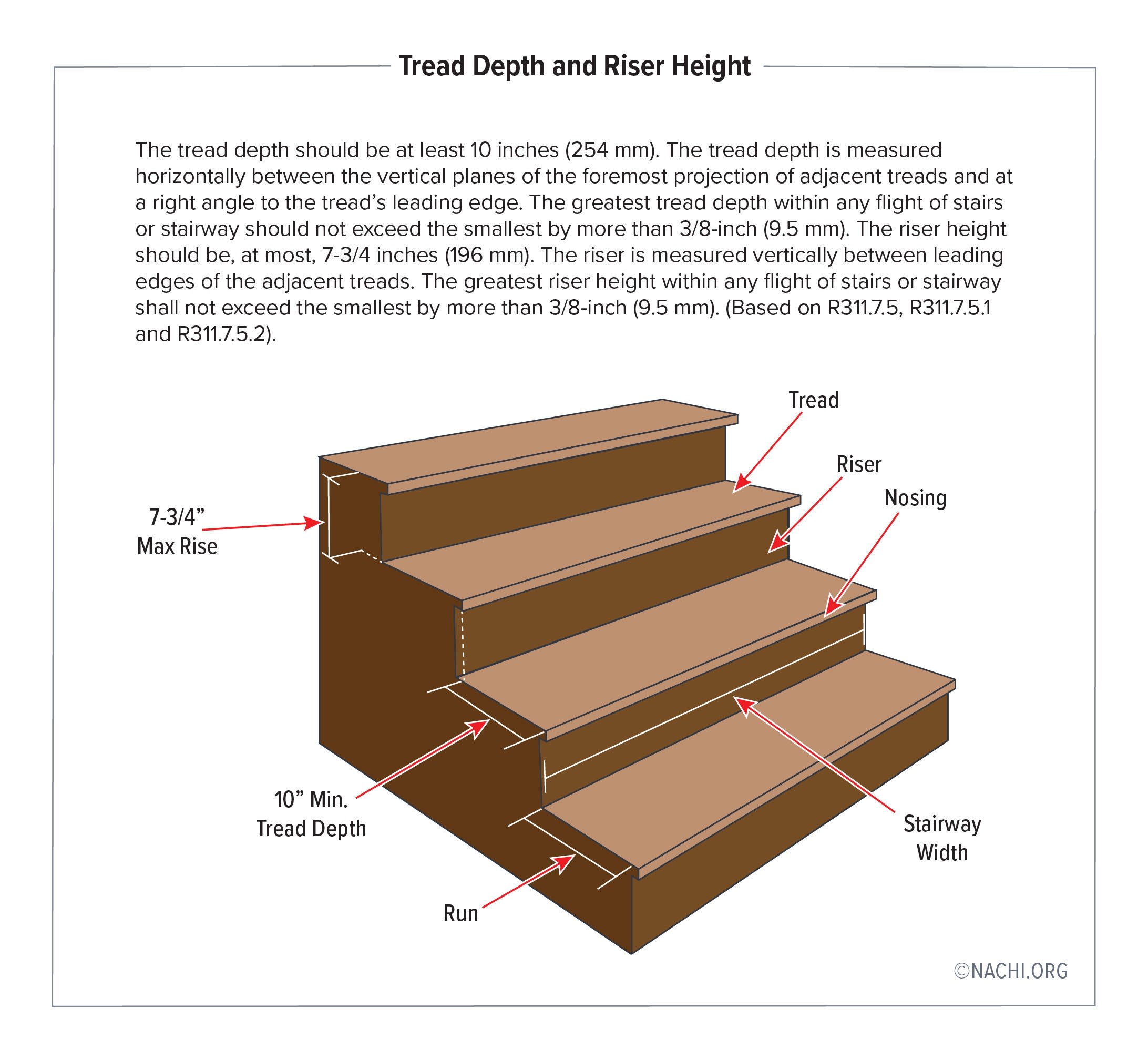
Tread Depth and Riser Height Inspection Gallery InterNACHI®
Straight-run stairs are the standard type in regular and traditional residential homes. They are the easiest to build and also the easiest to climb up and down in. Standard straight-run stair dimensions have a width of 36 inches or 91.4 centimeters, a tread depth of 11 inches or 28 centimeters, a riser size of 7 inches or 18 centimeters, and a.
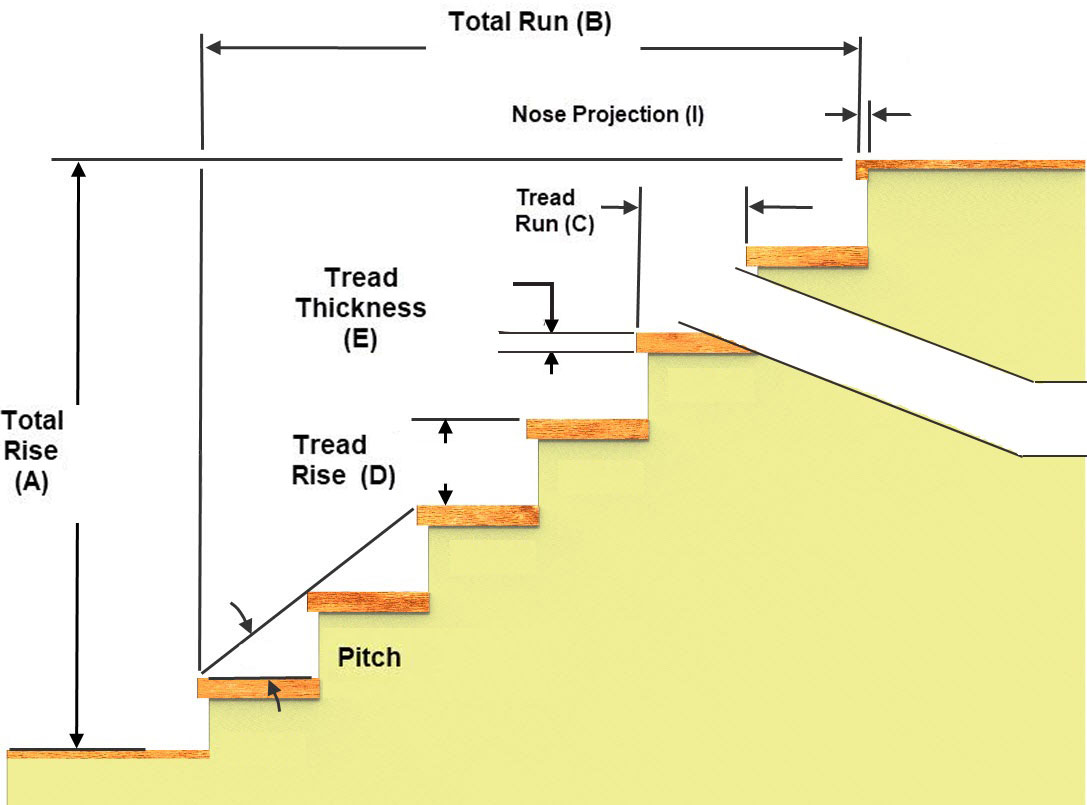
Stair Calculator How to Measure Stairs for a New Railing Keuka Studios
You can cheat a bit up or down, but below 17" and more than 19" will result in steps that require strides either too big or too small for most people. On my first stair, r+R was roughly 15 inches—way too far from 18" to be comfortable or safe. The IRC limit gives an r+R of 17 ¾"—pretty darn close to 18.

stairs Stairs treads and risers, Stair rise and run, Stair dimensions
The stair treads do not have enough depth - the treads were made from a single 2x6 (so they are 5 1/2" in depth). There is no railing on the steps although the height above ground is more than 30". The deck and platform railing is open with no guardrail balusters. Closed stair treads using a solid riser are shown at the left of the sketch and

Residential Stair Codes Headroom for Stairs Stairs, Interior stairs
We would need change the stair tread depth to make a 37° slope stair that has an acceptable 7-inch riser height. 7" Riser Height / Tread-Depth-Y = 0.7535 = 37° slope . Again using Mrs. Revere's elementary school algebra instructions, we can re-write the formula as . 7" Riser Height = 0.7535 x Tread-Depth-Y. Tread-Depth-Y = 7" Riser Height / 0.
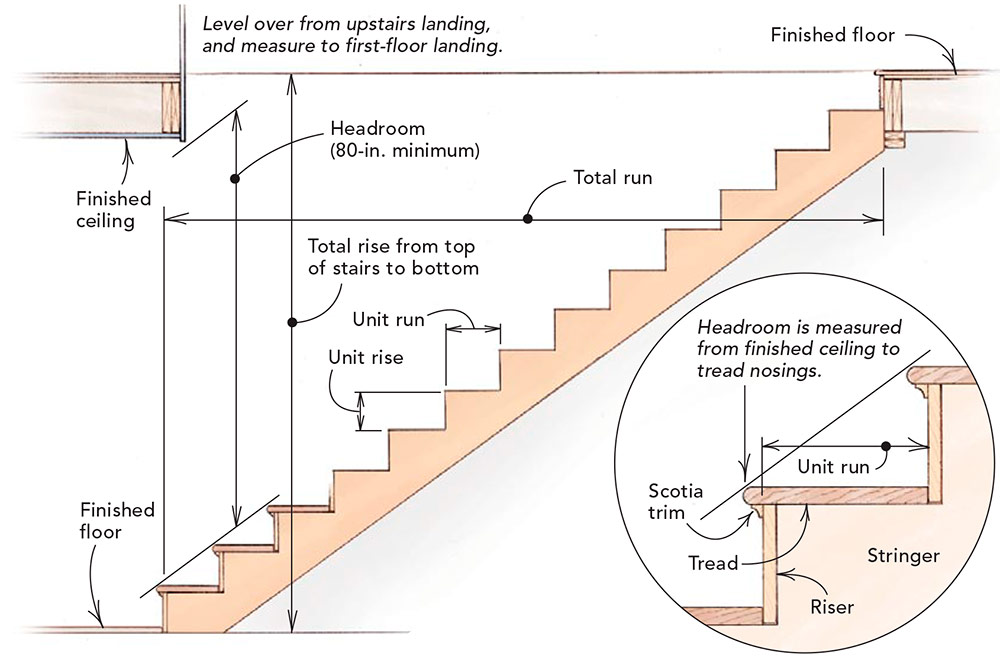
Strong and Simple Stairs Fine Homebuilding
IRC Stair Run Requirements. The "run" is the measurement of the tread, which needs to be a minimum of 10 inches if the tread has an overhang on it (see image). This is a measurement from the nose of the tread to the nose of the tread. You are not required to have a nosing/overhang on your stair treads. But if your stairs don't have a.

Everything You Need to Know About Rise and Tread of Staircase Design
The tread depth code for residential stairs should be no less than 10 inches with nosing, no less than 11 inches without nosing, and maximum tread depth variation should also be less than 3/8 of an inch. International Building Code (IBC) Alternately, there are commercial stair code regulations to comply with as well.
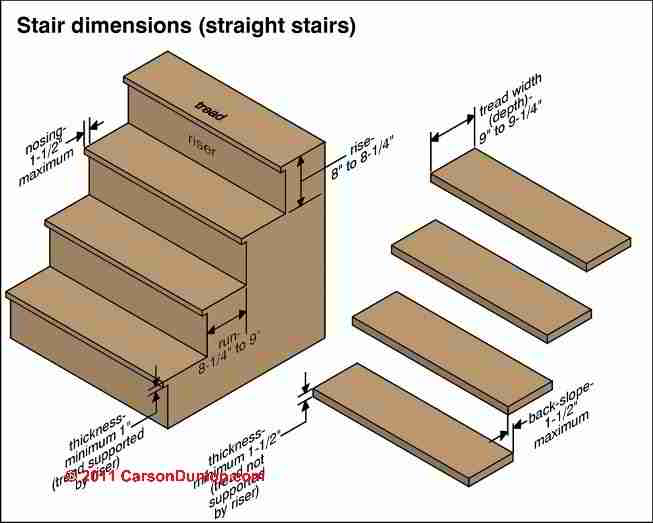
Stairway Tread Width & Tread Nose Details for Stair Construction
There are some rules of thumb when planning stairs. One is: "Two risers plus one tread should equal 25 in.". This works well in most circumstances. For example, you could have stairs with 7-in. risers and 11-in. treads (7 + 7 + 11 = 25), or you could have stairs with 7½-in. risers and 10-in. treads (7½ + 7½ + 10 = 25).

Image result for How to Install a 4x4 Deck Post into concrete footings
The depth of a stair tread is the horizontal distance from the vertical planes of the foremost projection to adjacent stair treads, as seen from a 90-degree angle to the leading edge of a tread. It measures the available surface area for a person's foot to rest when ascending or descending the stairway. Standard Stair Tread Depth

Residential Stair Codes EXPLAINED Building Code for Stairs Building
29 The general rule (in the US) is 7-11 (a 7 inch rise and 11 inch run) (17.78cm-27.94cm). More exactly, no more than 7 3/4 inches (19.7cm) for the riser (vertical) and a minimum of 10 inches (25.4cm) for the tread (horizontal or step). You can find some more information here as well on other stair-related dimensions.

How To Build A Large Outdoor Staircase To see more visit👇 Staircase
Stair tread depths shall be 11 inches (279 mm) minimum. The stair tread depth shall be measured horizontally between the vertical planes of the foremost projection of adjacent treads and at right angle to the tread's leading edge.
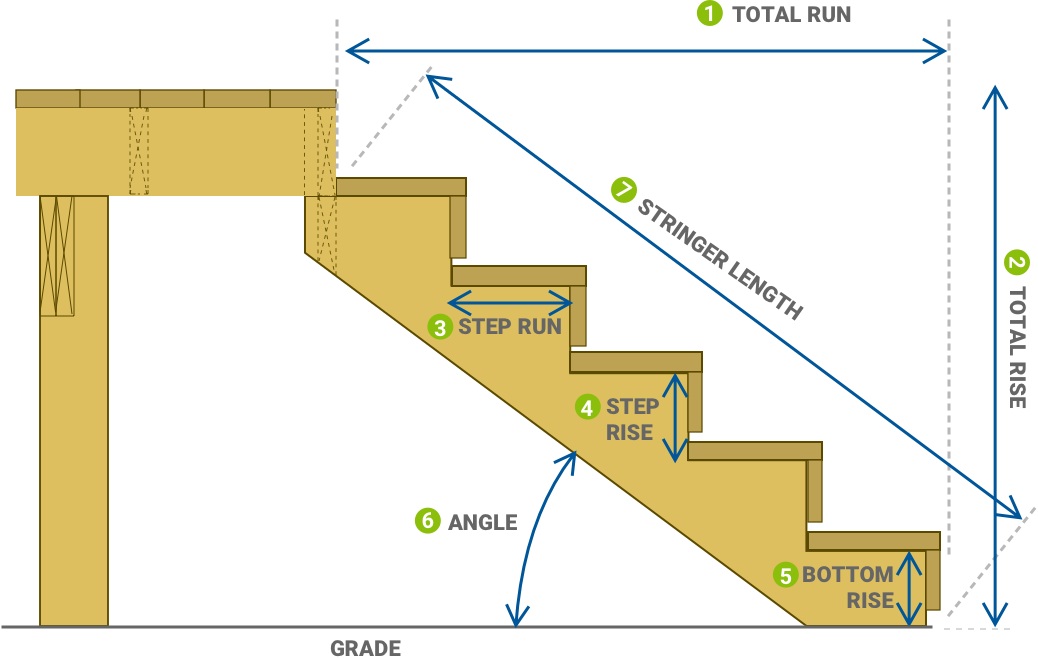
What is the normal rise and run for stairs? Interior Magazine
Here's an Updated Video on Figuring Riser Heights - https://youtu.be/PToIsqv687gHow to figure in Centimeters - https://youtu.be/kwynaArzneMhttps://www.homebu.

minimum stair tread depth australia Donella Burge
Measure horizontally from the front edge (or nosing) of a stair tread backwards to the stair riser. This distance must be at least 10 inches. However, the ICC notes that if the steps do not have nosings, and the steps have solid risers, not open risers, the minimum tread depth is 11 inches.

minimum stair tread depth commercial Elizebeth Latimer
Stair Tread Depth. The stair tread is the top surface of a step that you will place your feet on when using the stairs. A stair tread thickness is measured from the front edge of a step to the front edge of the next step. The distance between these two steps should not be less than 10 inches. However, if the steps don't have nosings but have.

All Information You Need To Design Any Type Of Stair Engineering
Having proper headroom is another important code requirement. The headroom for stairways measured vertically from the sloped line adjoining the tread nosing or the floor surface of the landing should be no less than 6 feet 8 inches. Illustration: 2021 © Building Code Trainer What is the Maximum Vertical Rise for Stairs?